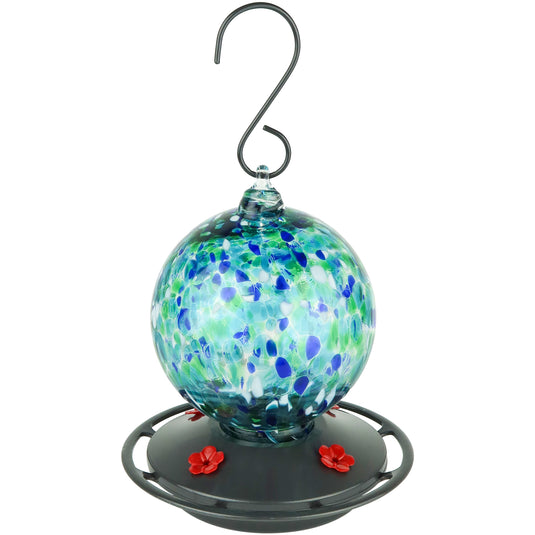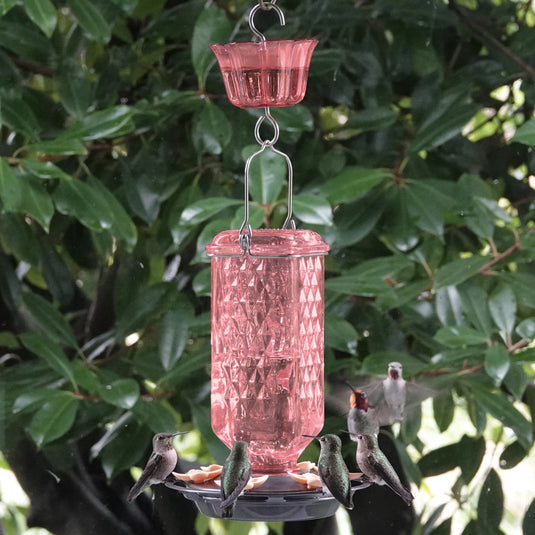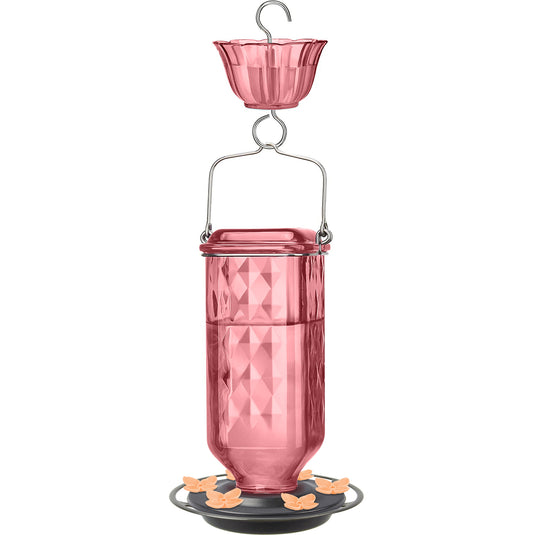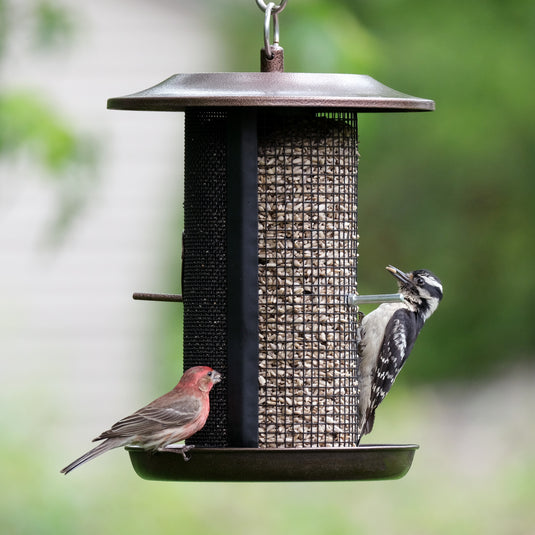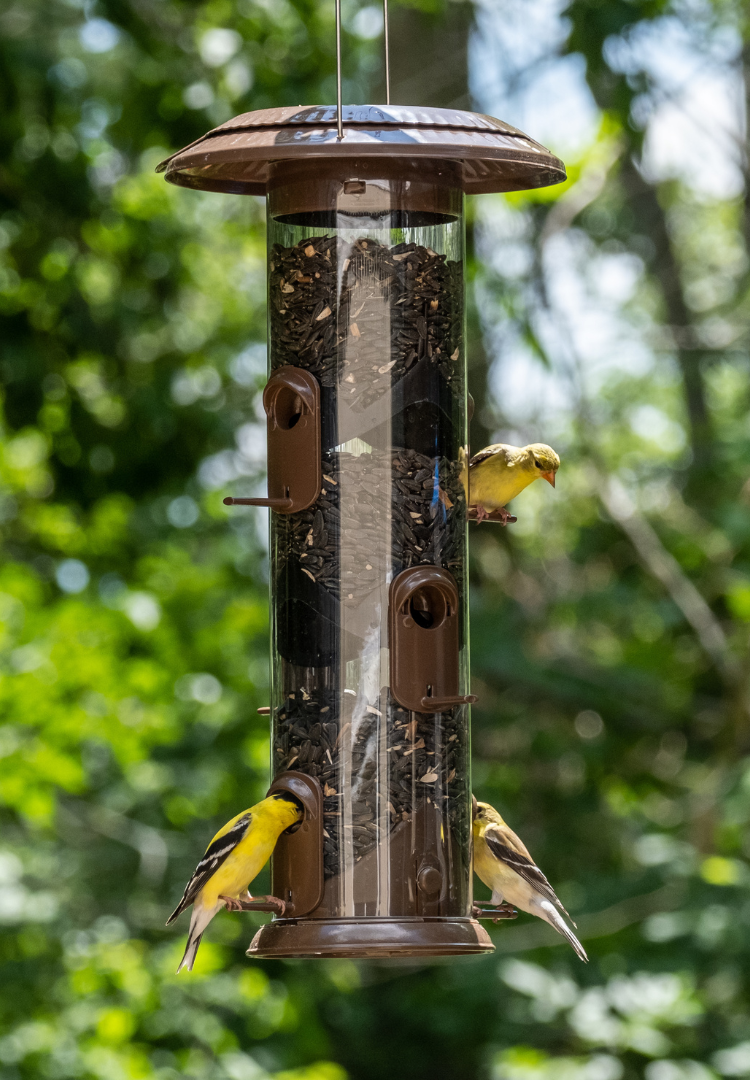Once the weather becomes colder, daylight fades, and migratory birds have made their journeys south, winter birds begin to take up residence for the long haul until spring. Since their typical food resources, like berries, insects, and seeds, become scarce in the colder months, wintertime is one of the most important seasons for backyard birding.
Having bird feeders stocked and ready can provide your backyard birds with the much-needed energy to survive and thrive this winter! Plus, they’ll make your yard busy with birds and give you a fun winter activity you can feel good about!
Pro tip: You may not think it’s as important to clean your bird feeders in the wintertime, but winter cleaning is just as important as any season! Keeping your bird feeders clean can prevent the spread of harmful bacteria and disease amongst birds. Get more cold weather birding tips in our winter bird feeding guide.
In general, it’s best to look for bird feeders that have these features:
- Protective design to conserve seed and contents in inclement weather
- Large capacity for less cold weather refilling
- Squirrel resistant (if squirrels are an issue in your yard)
- Attracts a wide variety of birds
- Easy to clean
- Easy to fill
Skip to section
Suet bird feeders
Squirrel proof bird feeders
Window bird feeders
Hopper bird feeders
Platform bird feeders
Tube bird feeders
Suet feeders
Suet is a high-energy food source that provides plenty of nutrition and fat to help keep birds warm in the winter. Many birds that typically eat insects in the springtime will eat suet in the winter months to fill the void when their usual food sources are not plentiful. You can attract a wide range of birds with suet including Woodpeckers, Titmice, Chickadees, and Nuthatches. To accommodate larger birds like woodpeckers, some suet feeders are elongated into a tail-prop design, allowing them to balance their body weight by placing their tail against the feeder. If nuisance birds like starlings and grackles are a known problem in your yard, try an upside-down style suet feeder to detract them.
Squirrel proof bird feeders
Unlike some other wildlife species, squirrels do not hibernate in the winter. Instead, they forage and stash food in their den to feed on during the cold season, but still venture out in search of calories and fat to sustain them. If you know that squirrels are a problem in your yard, choosing a bird feeder with squirrel-resistant features will help keep these feeder pests at bay. Look for a feeder with a locking roof, collapsible perches, or a seed shield that will make it harder for squirrels to reach the seed inside.
Remember, the most important squirrel proofing step you can take is proper feeder placement. If a squirrel is able to reach over from a nearby foothold and avoid placing any weight on the feeder, it may be able to access the bird seed. To overcome this problem, allow for at least 18 inches/47 cm of clearance around the feeder. This will force the squirrel to climb or jump onto the feeder and cause the perches to collapse under the weight. Try adding a baffle above or below your feeders as an additional layer of security.
You may also choose to feed the squirrels and other wildlife by placing a corn feeder near the woods or in a separate designated location away from the bird feeders. Many bird enthusiasts are successful with luring wildlife to that location and keeping those unwanted critters off the feeders intended for the birds.
Window bird feeders
A window bird feeder is an excellent choice for any birder wanting to connect with nature from the warmth and comfort of their own home. Window bird feeders typically use a suction cup mounting system to allow you to mount them directly to your window, giving you the opportunity to view your backyard birds up close like never before! The Nature’s Way Clear View window bird feeder is large enough to accommodate birds of all sizes and keeps its contents covered. New to window bird feeding? Learn how to use a window bird feeder.
Hopper bird feeders
Larger hopper bird feeders are a good choice for the winter since they can accommodate a variety of small and large birds while giving you the option to feed seed and suet in one feeder. Look for a hopper feeder that has a wide opening for easy filling, removeable parts for thorough cleaning, and a large capacity for less frequent filling. It’s important to make sure your feeder has a seed tray with good water drainage to keep your bird seed fresh in the snowy weather.
Platform bird feeders
Platform feeders are an excellent choice for any birder who wants to attract the widest variety of birds with virtually any type of seed. The open design of this feeder allows many birds of multiple sizes to feed at once, making for a busy and exciting experience! Consequently, its open design does leave it exposed to the elements and may cover the seed if snow accumulates. To combat the weather, use a protective baffle or place the feeder under the cover of an eave or tree, keeping in mind the 18 in/37 cm rule of thumb to deter squirrels.
The most important features to look for in a platform feeder are good drainage and quality materials. Choose a platform feeder with hardware that won’t rust and materials that are resistant to rot and insects. A removeable tray with perforations for drainage will allow water to drain and air to flow while making it easy to keep clean.
Tube bird feeders
If you’re looking to feed medium and small sized birds, a tube feeder might be the right choice for you. Tube feeders are a smart choice for winter weather feeding since the seed is fully enclosed in the tube and protected from elements. To maximize your bird viewing, look for a tube feeder that has a lot of perches and even-feed baffles that keep a constant seed level at all seed ports. Feeders with a wide funneled opening and a large seed capacity will make for less frequent and easy fillings. For specifically feeding finches, you may choose to replace the regular seed ports with thistle inserts, which come included with every Nature’s Way tube feeder, or look for a specialized thistle bird feeder for finches.







